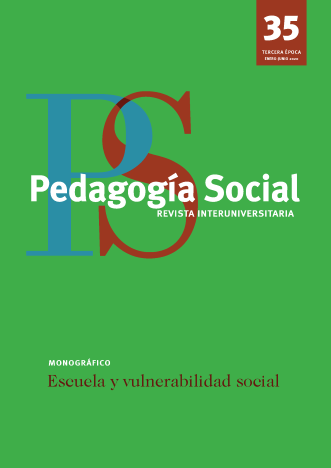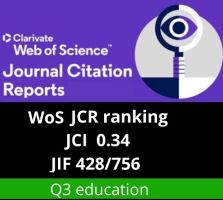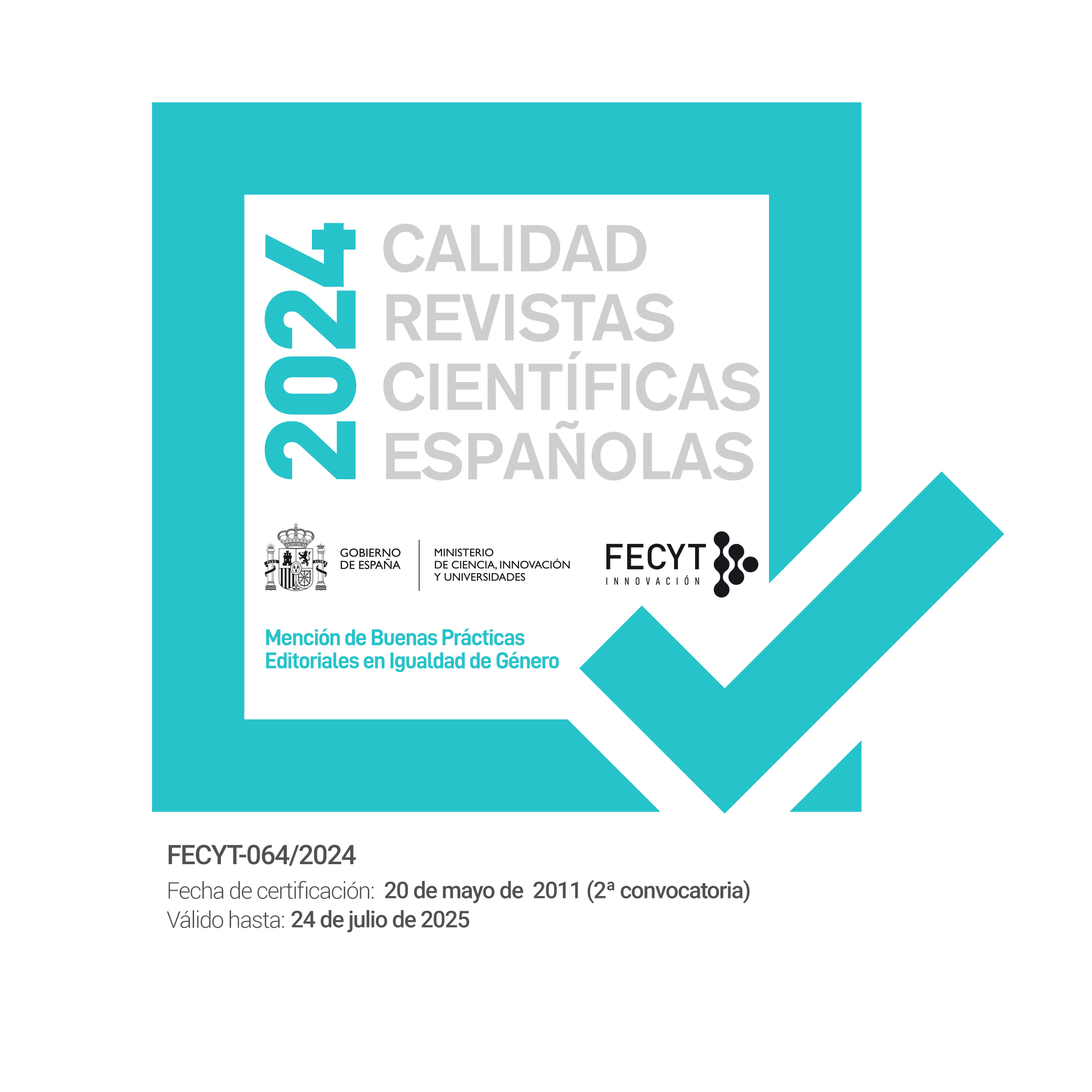Infancia y derechos humanos en la ciudad de Zamora
DOI:
https://doi.org/10.7179/PSRI_2020.35.07Palabras clave:
infancia, adolescencia, participación, ciudad, políticasResumen
Las ciudades actuales están ofreciendo espacios de ciudadanía como respuesta a las transformaciones sociales y nuevas realidades; convirtiéndose los territorios en espacios de desarrollo sociopersonal. Interactuando en este contexto se encuentran los niños, niñas y adolescentes, lo que lleva a conocer cuáles son los desarrollos urbanos que se sitúan en este paradigma de ciudades saludables, inteligentes y sostenibles. El principal objetivo de este es¬tudio ha sido analizar la opinión de los niños, niñas y adolescentes de la ciudad de Zamora en relación con las políticas de la infancia y adolescencia del municipio. Para ello se utilizó una in¬vestigación de tipo exploratorio y descriptivo, utilizando un enfoque cualitativo traducido en 3 grupos de discusión. Los relatos muestran que los derechos de los niños, niñas y adolescen¬tes en la ciudad no siempre son prioritarios, aunque los participantes manifiestan que debería haber una especial preocupación por aquellos menores de edad en situación de vulnerabili¬dad. Estos resultados plantean la necesidad de coordinar los procesos políticos, incluyendo la participación de los niños, niñas y adolescentes en la planificación urbana, lo que contribuirá a adaptar con eficacia los espacios urbanos y facilitar su autonomía y empoderamientoDescargas
Citas
Acuña, M.ª B., Aguilera, R., Cesario, J, & Imhoff, D. (2016). Pertenencia social y comprensión de la desigualdad social en niños y niñas de grupos sociales contrastantes. Ciencias Psicológicas, 10 (1), pp. 17-29.
Assiego, V., & Legal, D. (2018). Análisis de la inversión en infancia en el borrador de los Presupuestos Generales del Estado 2018. Madrid: Plataforma de Infancia.
Cohen, L., & Manion, L. (1990). Métodos de investigación educativa. Madrid: La Muralla.
Fernandes, N. (2016). Ética na pesquisa com crianças: ausências e desafios. Revista Brasileria de Educação, 21 (66), 759- 779. Doi: 10.1590/S1413-24782016216639
Gaitán, L. (2006). Sociología de la Infancia. Madrid: Síntesis.
Gaitán, L. (2018). Los derechos humanos de los niños: ciudadanía más allá de las “3Ps”. Sociedad e Infancias, 2, 17-37.
García, M.; Ibáñez, J., & Alvira, F. (2005) (3.ª ed.). El análisis de la realidad social. Métodos y técnicas de investigación. Madrid: Alianza Editorial.
Garcimartín, C. (2018) (coord.). Medición de la inversión presupuestaria en infancia. Propuesta metodológica y primeros resultados en España. Madrid: UNICEF Comité Español.
Gil Villa, F. (2007). Juventud a la deriva. Barcelona: Ariel.
Gómez, I., Jiménez, E., & Cornejo, M.ª J. (2017). Comunicación intercultural. Desarrollo de habilidades en educación formal y no formal. Madrid: Editorial CCS.
Gómez-Mendoza, M. A., & Alzate-Piedrahíta, M. V. (2014). La infancia contemporánea. Revista Latinoamericana de Ciencias Sociales, Niñez y Juventud, 12 (1), pp. 77-89.
Krueger, R A. (1991). El grupo de Discusión. Guía práctica para la investigación aplicada. Madrid: Pirámide.
Liebel, M. (2015). Sobre el interés superior de los niños y la evolución de las facultades. Anales de la Cátedra Francisco Suárez, 49, 43-61.
Marí, S. (2016). Las TIC en la infancia y la juventud, en Quintana Díaz, J. y Melendro Estefanía, M. (coord.). Acción so¬cioeducativa con colectivos vulnerables. Madrid: UNED.
Martín, A. V., Sánchez, M.ª C., & Pérez, M.ª D. (2008). Relaciones y educación intergeneracional. Debate entre genera¬ciones. Salamanca: Universidad de Salamanca.
Martínez, N., & Bedmar, M. (2018). Aprendizaje basado en la experiencia. Programa de educación intergeneracional. En-clave pedagógica. Revista Internacional de Investigación e Innovación Educativa, 14, 7-14.
Ministerio de Sanidad, Consumo y Bienestar Social (2018). Boletín de datos estadísticos de medidas de protección a la infancia-BEMPI. Nº 20, datos 2017. Madrid. https://www.mscbs.gob.es/ssi/familiasInfancia/Infancia/pdf/Bole¬tin_20_DEFINITIVO.pdf.
Monclús, A. (2001). Educación para el desarrollo y cooperación internacional. Madrid: Editorial Complutense.
Morón, S., Busquet, J., Aranda, D., Ruano, A., & Ballano, S. (2010). El uso de las TIC y la brecha digital entre adultos y adolescentes. Encuentros y (des)encuentros en la escuela y en el hogar. Estado de la cuestión. Comunicación y desarrollo en la era digital. Congreso Asociación Española de Investigación de la Comunicación. Universidad de Málaga, 3, 4 y 5 de febrero.
Martínez, S., Moreno, P., & Escarbajal, A. (coords.) (2017). Envejecimiento activo, programas intergeneracionales y edu¬cación social. Madrid: Dykinson.
Murillo, S., & Mena, L. (2006). Detectives y camaleones. El grupo de discusión: una propuesta para la investigación cualitativa. Madrid: Talasa.
Ochaíta, E., & Espinosa, M.ª A. (2009). Indicadores municipales de aplicación de la Convención sobre los Derechos del Niño. Madrid: UNICEF Comité Español y UNDIA.
ONU (2017). Nueva Agenda Urbana. H III. http://habitat3.org/wpcontent/uploads/NUA-Spanish.pdf
Pascual, C., & Castro, L. de (2014). ¡Es que no me lo habías preguntado antes! Lo que los niños y niñas dicen: la dimen¬sión subjetiva del bienestar infantil. Barcelona: Educo.
Patton, M. (2002) (3.ª ed.). Qualitative research and evaluation methods. Thousand Oaks: Sage Publications.
Plummer, K. (2003). Intimate Citizenship. Private Decisions and Public Dialogues. Seattle: University of Washington Press.
Qvortrup, J. (1992). El niño como sujeto y objeto. Ideas sobre el programa de infancia en el Centro Europeo de Viena. Infancia y Sociedad, 15, 169-186.
Rodes, F., Monera, C. E., & Pastor M.ª del (dirs.) (2010). Vulnerabilidad infantil. Un enfoque multidisciplinar. Madrid: Ediciones Diaz de Santos.
Solís, R. (2016). Nuevo diccionario para el análisis e intervención social con infancia y adolescencia. Madrid: Letras de autor.
Tonucci, F. (1993): La ciudad de los niños: Un modo nuevo de pensar la ciudad. Barcelona: Graò
Vega, M.ª P. de (2013). La convención sobre los derechos del niño en la escuela. Forum Aragón. Revista digital de FE¬AFE-Aragón, 9, 47-48.
Villagrasa, C. (2015). Derechos de la infancia y la adolescencia: hacia un sistema legal. Anales de la Cátedra Francisco Suárez, 49, 17-41.
Descargas
Publicado
Cómo citar
Número
Sección
Licencia
Derechos de autor 2020 Pedagogía Social. Revista Interuniversitaria

Esta obra está bajo una licencia internacional Creative Commons Atribución-NoComercial-CompartirIgual 4.0.
Derechos de reproducción y archivo
La versión publicada de los artículos podrá ser autoarchivada por sus autores en repositorios institucionales y temáticos de acceso abierto. No obstante la reutilización total o parcial de los mismos en nuevos trabajos o publicaciones deberá ser autorizada por Pedagogía Social. Revista Interuniversitaria.
Los trabajos publicados deberán ser citados incluyendo el título de la Revista, Pedagogía Social. Revista Interuniversitaria, nº, páginas y año de publicación.
Responsabilidades éticas
Pedagogía Social. Revista Interuniversitaria no acepta material publicado anteriormente en otros documentos. Los/as autores/as son responsables de obtener los permisos oportunos para reproducir parcialmente material de otras publicaciones y citar correctamente su procedencia. Estos permisos deben solicitarse tanto al autor/a como a la editorial que ha publicado dicho material.
Es obligación de Pedagogía Social. Revista Interuniversitaria detectar y denunciar prácticas fraudulentas.
En la lista de autores/as firmantes deben figurar únicamente aquellas personas que han contribuido intelectualmente al desarrollo del trabajo.
La revista espera que los/as autores/as declaren cualquier asociación comercial que pueda suponer un conflicto de intereses en conexión con el artículo remitido.
Los autores deben mencionar en el manuscrito, preferentemente en el apartado del método, que los procedimientos utilizados en los muestreos y controles han sido realizados tras la obtención de consentimiento informado.
La revista no utilizará ninguno de los trabajos recibidos con otro fin que no sea el de los objetivos descritos en estas normas.
Aviso de derechos de autor/a
© Pedagogía Social. Revista Interuniversitaria. Los originales publicados en las ediciones impresa y electrónica de esta Revista son propiedad del Pedagogía Social. Revista Interuniversitaria, siendo necesario citar la procedencia en cualquier reproducción parcial o total.
Salvo indicación contraria, todos los contenidos de la edición electrónica se distribuyen bajo una licencia de uso y distribución “Creative Commons Reconocimiento-No Comercial 3.0 España” (CC-by-nc). Puede consultar desde aquí la versión informativa y el texto legal de la licencia. Esta circunstancia ha de hacerse constar expresamente de esta forma cuando sea necesario.






